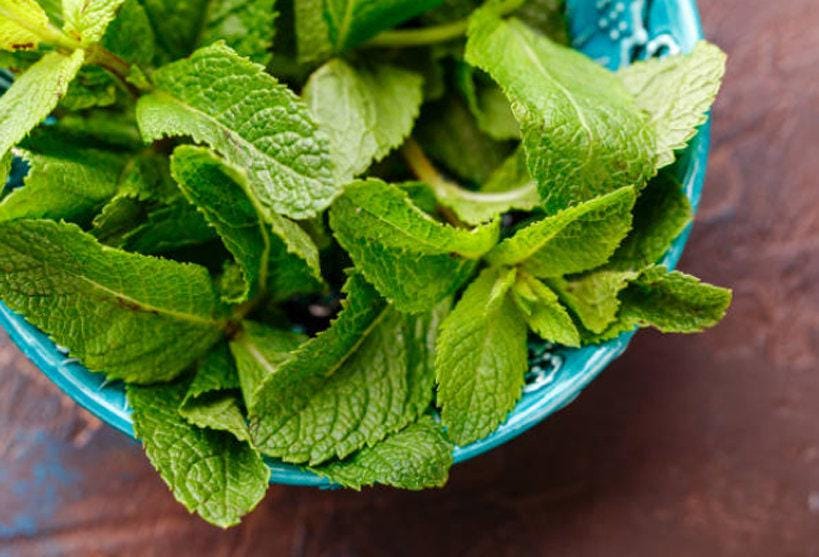Compared to peppermint, spearmint has a less aggressive flavor with fruity undertones. Almost everyone enjoys the delicious flavor of this easy to grow mint. Wonderful in everything from iced drinks, hot tea, sauces & lamb dishes. The flavor is best when the leaves are cut just before the blossoms open. Spearmints gorgeous lavender flowers are both edible and highly attractive to bees.
In boggy settings mint can spread by underground rhizomes, but this is easy to control. You will want to keep this fast-spreading plant in a container so that it does not take over your garden.
~ sowing ~
Sow seeds no more than 5mm (¼”) deep in moist soil. Sow indoors 8-10 weeks before last frost, or direct sow in late spring. Seeds should sprout in 10-16 days. Bottom heat will speed germination.
Mint grows well in rich soil and partial shade, and damp soil. Direct sow after the last spring frost, thinning the seedlings to 10-12". Keep in mind that mint spreads easily and can nearly take over the space it is planted in. Because of this, some gardeners prefer to grow mint in an isolated location or as a container plant because of its vigorous spreading habit. Mint also grows well from root cuttings or by division.
~ growing ~
Mint appreciates rich soil, and will benefit from organic matter such as compost. Keep the soil fairly moist, but avoid getting the leaves wet when watering, since this can cause disease. In areas with cold winters, cut the plant down to the ground after frost and provide a thick layer of mulch for protection.
Mint spreads in the garden with gusto via a vigorous root system, so it may be preferable to confine it to planters on the balcony or in a raised bed. Prune plants back hard in early summer to promote good top growth. Bring some inside to grow in a small container over winter to grow on a brightly lit windowsill.
~ harvesting ~
Fresh leaves can be harvested as soon as the plant reaches a height of 3-4". The small, young leaves tend to have the best flavor. Cut the stems down to within 1" of the ground level to allow for new growth. Keep the tops pruned to prevent blooming, since this causes the leaves to deteriorate in flavor. To dry the leaves, hang the stems upside down in a dry location until the leaves feel completely dry; strip them from the stems and keep them in an airtight container. Fresh mint leaves can also be frozen. The flowers are edible and bring distinctive character to salads and sweets.
~ companion planting ~
Mint attracts earthworms, hoverflies and predatory wasps, and repels cabbage moths, aphids, and flea beetles. Mint can spread aggressively, so it may be better to use cut mint as a mulch around Brassicas, or to restrain it in containers around the vegetable garden. Avoid planting near parsley.
~ insect repellent ~
There are more than 50 different mint species and all of them work as an insect repellent. Mint also repels ants, mice and rats. Place crushed mint leaves in small sachet bags and place the sachets in various locations around the house. Crush a few dry mint leaves where ants are active to keep them away.



















